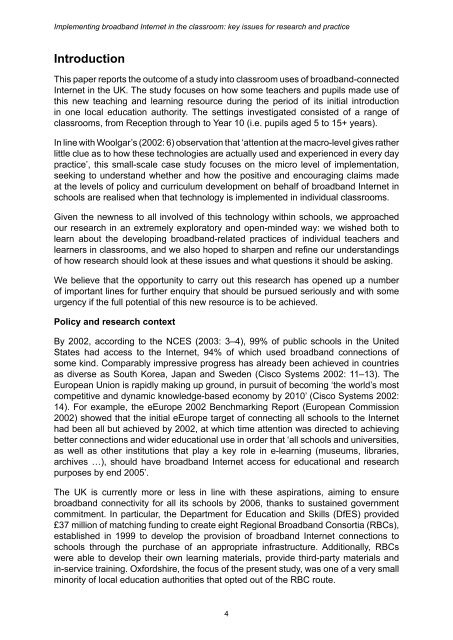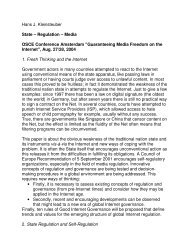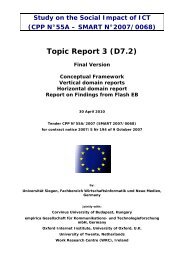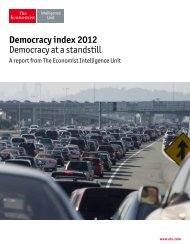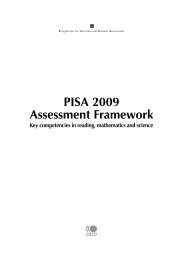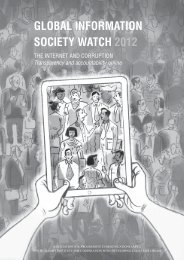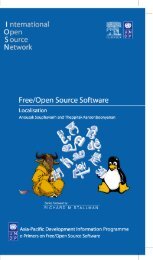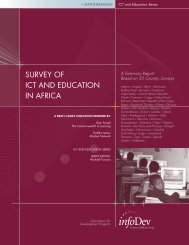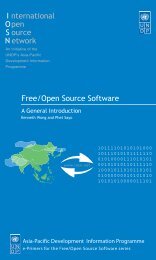Implementing broadband Internet in the classroom: key issues for ...
Implementing broadband Internet in the classroom: key issues for ...
Implementing broadband Internet in the classroom: key issues for ...
Create successful ePaper yourself
Turn your PDF publications into a flip-book with our unique Google optimized e-Paper software.
<strong>Implement<strong>in</strong>g</strong> <strong>broadband</strong> <strong>Internet</strong> <strong>in</strong> <strong>the</strong> <strong>classroom</strong>: <strong>key</strong> <strong>issues</strong> <strong>for</strong> research and practiceIntroductionThis paper reports <strong>the</strong> outcome of a study <strong>in</strong>to <strong>classroom</strong> uses of <strong>broadband</strong>-connected<strong>Internet</strong> <strong>in</strong> <strong>the</strong> UK. The study focuses on how some teachers and pupils made use ofthis new teach<strong>in</strong>g and learn<strong>in</strong>g resource dur<strong>in</strong>g <strong>the</strong> period of its <strong>in</strong>itial <strong>in</strong>troduction<strong>in</strong> one local education authority. The sett<strong>in</strong>gs <strong>in</strong>vestigated consisted of a range of<strong>classroom</strong>s, from Reception through to Year 10 (i.e. pupils aged 5 to 15+ years).In l<strong>in</strong>e with Woolgar’s (2002: 6) observation that ‘attention at <strong>the</strong> macro-level gives ra<strong>the</strong>rlittle clue as to how <strong>the</strong>se technologies are actually used and experienced <strong>in</strong> every daypractice’, this small-scale case study focuses on <strong>the</strong> micro level of implementation,seek<strong>in</strong>g to understand whe<strong>the</strong>r and how <strong>the</strong> positive and encourag<strong>in</strong>g claims madeat <strong>the</strong> levels of policy and curriculum development on behalf of <strong>broadband</strong> <strong>Internet</strong> <strong>in</strong>schools are realised when that technology is implemented <strong>in</strong> <strong>in</strong>dividual <strong>classroom</strong>s.Given <strong>the</strong> newness to all <strong>in</strong>volved of this technology with<strong>in</strong> schools, we approachedour research <strong>in</strong> an extremely exploratory and open-m<strong>in</strong>ded way: we wished both tolearn about <strong>the</strong> develop<strong>in</strong>g <strong>broadband</strong>-related practices of <strong>in</strong>dividual teachers andlearners <strong>in</strong> <strong>classroom</strong>s, and we also hoped to sharpen and ref<strong>in</strong>e our understand<strong>in</strong>gsof how research should look at <strong>the</strong>se <strong>issues</strong> and what questions it should be ask<strong>in</strong>g.We believe that <strong>the</strong> opportunity to carry out this research has opened up a numberof important l<strong>in</strong>es <strong>for</strong> fur<strong>the</strong>r enquiry that should be pursued seriously and with someurgency if <strong>the</strong> full potential of this new resource is to be achieved.Policy and research contextBy 2002, accord<strong>in</strong>g to <strong>the</strong> NCES (2003: 3–4), 99% of public schools <strong>in</strong> <strong>the</strong> UnitedStates had access to <strong>the</strong> <strong>Internet</strong>, 94% of which used <strong>broadband</strong> connections ofsome k<strong>in</strong>d. Comparably impressive progress has already been achieved <strong>in</strong> countriesas diverse as South Korea, Japan and Sweden (Cisco Systems 2002: 11–13). TheEuropean Union is rapidly mak<strong>in</strong>g up ground, <strong>in</strong> pursuit of becom<strong>in</strong>g ‘<strong>the</strong> world’s mostcompetitive and dynamic knowledge-based economy by 2010’ (Cisco Systems 2002:14). For example, <strong>the</strong> eEurope 2002 Benchmark<strong>in</strong>g Report (European Commission2002) showed that <strong>the</strong> <strong>in</strong>itial eEurope target of connect<strong>in</strong>g all schools to <strong>the</strong> <strong>Internet</strong>had been all but achieved by 2002, at which time attention was directed to achiev<strong>in</strong>gbetter connections and wider educational use <strong>in</strong> order that ‘all schools and universities,as well as o<strong>the</strong>r <strong>in</strong>stitutions that play a <strong>key</strong> role <strong>in</strong> e-learn<strong>in</strong>g (museums, libraries,archives …), should have <strong>broadband</strong> <strong>Internet</strong> access <strong>for</strong> educational and researchpurposes by end 2005’.The UK is currently more or less <strong>in</strong> l<strong>in</strong>e with <strong>the</strong>se aspirations, aim<strong>in</strong>g to ensure<strong>broadband</strong> connectivity <strong>for</strong> all its schools by 2006, thanks to susta<strong>in</strong>ed governmentcommitment. In particular, <strong>the</strong> Department <strong>for</strong> Education and Skills (DfES) provided£37 million of match<strong>in</strong>g fund<strong>in</strong>g to create eight Regional Broadband Consortia (RBCs),established <strong>in</strong> 1999 to develop <strong>the</strong> provision of <strong>broadband</strong> <strong>Internet</strong> connections toschools through <strong>the</strong> purchase of an appropriate <strong>in</strong>frastructure. Additionally, RBCswere able to develop <strong>the</strong>ir own learn<strong>in</strong>g materials, provide third-party materials and<strong>in</strong>-service tra<strong>in</strong><strong>in</strong>g. Ox<strong>for</strong>dshire, <strong>the</strong> focus of <strong>the</strong> present study, was one of a very smallm<strong>in</strong>ority of local education authorities that opted out of <strong>the</strong> RBC route.4


